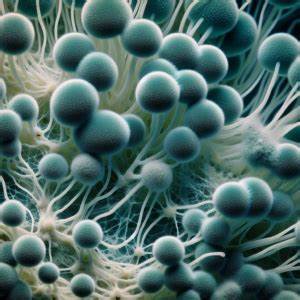Light management is a crucial aspect of poultry farming, especially for laying hens, as it significantly influences their productivity, health, and overall well-being. Proper light management involves manipulating the intensity, duration, and spectrum of light that hens are exposed to throughout their lifecycle, leading to numerous benefits.
First and foremost, light plays a pivotal role in stimulating reproductive performance in laying hens. The photoperiod, or the length of day versus night, directly affects the secretion of hormones such as prolactin and melatonin, which regulate egg production. By providing optimal light conditions, farmers can enhance the hens’ egg-laying frequency and overall egg yield. It is well-documented that hens exposed to extended daylight hours (approximately 14-16 hours of light per day) exhibit improved egg production rates, often achieving peak production in a shorter time frame.
Additionally, proper light management can improve egg quality. Light influences the thickness of eggshells, shell coloration, and overall egg weight. Studies have shown that hens reared in well-lit environments produce eggs with stronger shells and better external quality attributes, which is crucial for both consumer preference and reducing losses due to breakage. Further, the presence of specific light wavelengths, particularly blue light, has been associated with improved egg weight and shell thickness, demonstrating that not just the quantity but also the quality of light matters.
Moreover, light management directly affects the behavioral patterns of laying hens. Chickens are naturally diurnal animals, and proper lighting can help mimic their natural environment, reducing stress and promoting natural behaviors such as foraging, resting, and social interaction. This not only enhances their quality of life but also minimizes the likelihood of aggressive behaviors that can result from overcrowding. By providing a balanced light schedule, farmers can create an environment that encourages normal behavior, leading to healthier and more productive flocks.
Health benefits also arise from effective light management strategies. Adequate lighting minimizes the incidence of poultry diseases by encouraging active behaviors and promoting stronger immune responses. When hens are kept in dark or poorly lit conditions, their stress levels can increase, which may lead to immunosuppression and higher vulnerability to diseases. Furthermore, specific light spectra, such as red light, have been shown to reduce aggression and feather pecking among hens, leading to a decrease in injuries and a more stable social structure within the flock.
Another significant advantage of light management involves energy efficiency and cost reduction in poultry production. Using artificial lighting, farmers can strategically control the environment to optimize production cycles, thus enhancing the profitability of their operations. For instance, by extending light periods during early production phases, farmers can increase the rate of return on investments in feed and infrastructure. Additionally, integrating modern LED lighting systems can help reduce energy costs, as they are more energy-efficient and have longer lifespans than traditional lighting solutions.
Furthermore, light management can be tailored to align with marketing strategies for eggs. Consumers are increasingly interested in eggs produced under specific welfare standards, and providing an environment that respects the natural behaviors of hens through careful lighting can serve as a unique selling point. Organic and free-range egg production often emphasizes the significance of humane treatment, and good light management practices can support these claims by ensuring hens have the opportunity to thrive in a stress-free environment.
It is also essential to note that light management should consider the different life stages of laying hens. For instance, the lighting needs for pullets (young hens before they start laying eggs) are distinct from those of older hens. Pullets benefit from gradual light increases that prepare them for future laying and prevent early sexual maturity, which can lead to reproductive issues. As hens transition into their laying phase, a consistent and well-planned lighting program ensures a smooth progression into peak production periods.
To implement effective light management, farmers should utilize light schedules that include natural and artificial lighting. This blend allows for flexibility in production systems, adapting to seasonal variations and evolving environmental conditions. Technologies such as automated timers and controllers can help manage complex light schedules more efficiently, ensuring that farmers adhere to their desired lighting plans without manual adjustments.
Moreover, training and educating farm workers about the importance of light management can improve implementation and adherence to established protocols. Workers invested in understanding how lighting affects hen behavior and productivity will likely enhance their management efforts, creating a more harmonious environment that maximizes production while promoting animal welfare.
Ultimately, the benefits of light management for laying hens are multifaceted, encompassing increased egg production, improved egg quality, enhanced behavioral health, reduced disease susceptibility, and economic advantages for poultry farmers. As the industry continues to evolve, the focus on animal welfare and sustainable farming practices will require an ongoing commitment to optimizing lighting strategies. Embracing innovative technologies and a deeper understanding of poultry behavior will enable the development of light management systems that enhance both productivity and animal well-being, forming a foundation for the future of poultry farming.
In conclusion, incorporating effective light management strategies is critical in laying hen production, impacting their health, behavior, and productivity. By understanding the benefits of tailored lighting programs, poultry farmers can improve their systems and contribute positively to the broader goals of animal welfare and sustainable agriculture.

